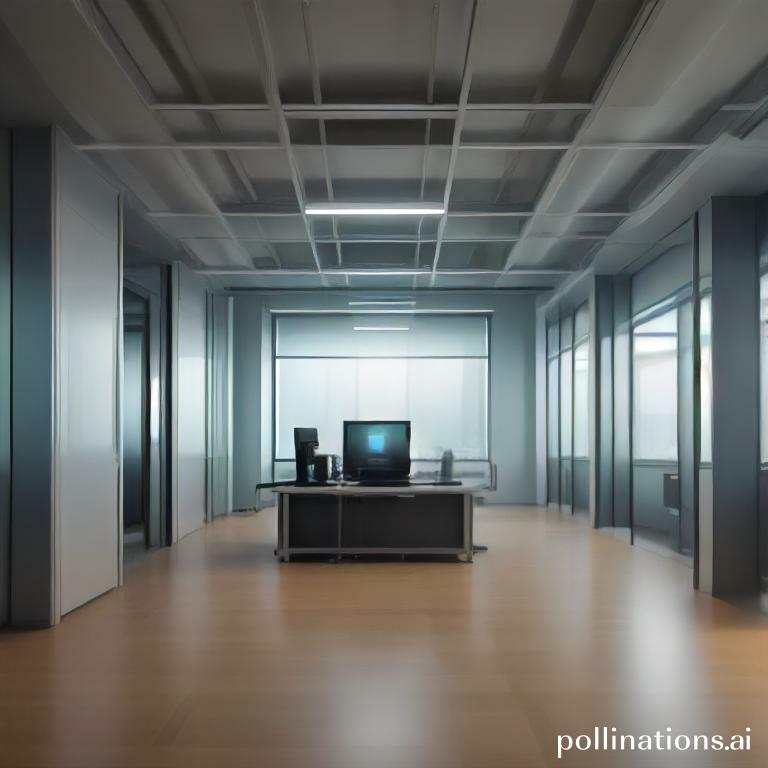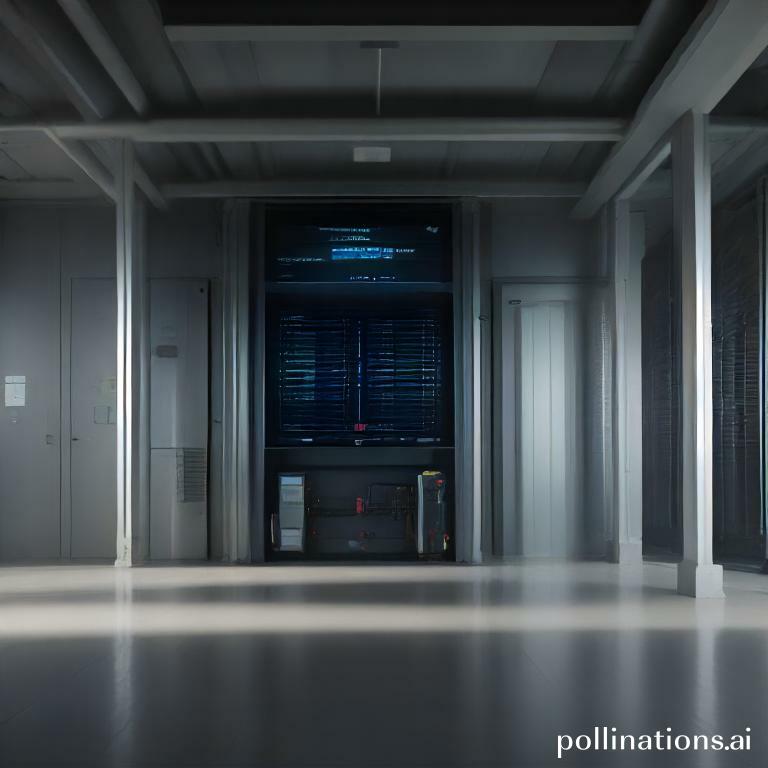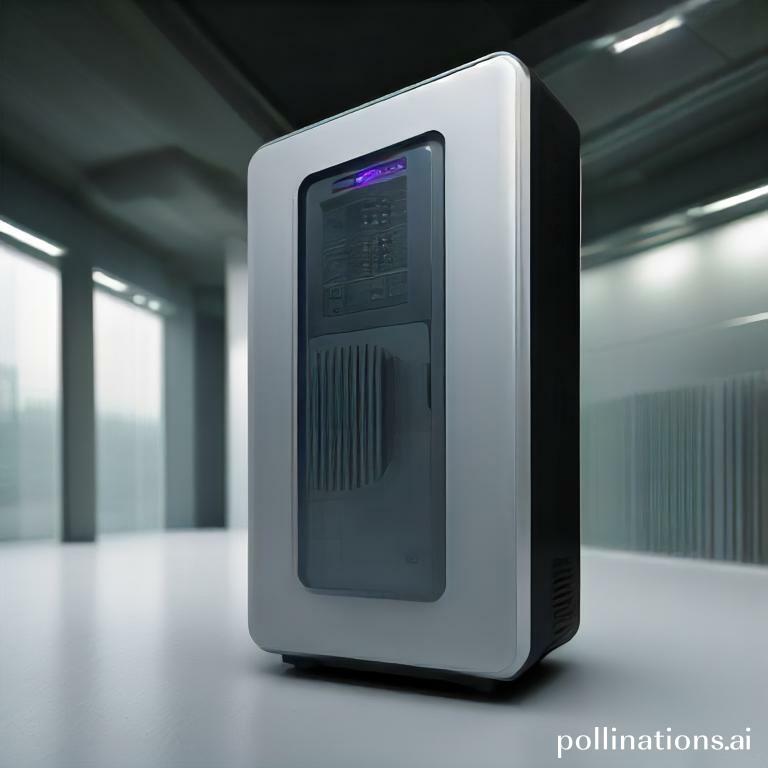
Check Out The Exclusive Deals Waiting For You! ∇
The Role of Sensors in IoT-enabled HVAC Systems
1. Types of Sensors Used in IoT-enabled HVAC Systems
In IoT-enabled HVAC systems, various sensors play a crucial role in ensuring efficient and effective operation. These sensors include:
- Temperature Sensors: These sensors measure the temperature of the surrounding environment and provide valuable data for controlling HVAC systems. They help maintain optimal temperature levels, ensuring comfort and energy efficiency.
- Humidity Sensors: Humidity sensors monitor and control the humidity levels within the HVAC system. They prevent issues such as mold growth and condensation, improving indoor air quality and overall comfort.
- Air Quality Sensors: These sensors monitor the air quality and detect pollutants, such as volatile organic compounds (VOCs) and carbon dioxide. They enable HVAC systems to adjust ventilation rates and improve indoor air quality.
2. Monitoring and Controlling Temperature with IoT Sensors
IoT sensors provide real-time temperature monitoring and control in HVAC systems. By continuously collecting temperature data, these sensors allow for precise temperature adjustments based on occupancy, weather conditions, and user preferences. This ensures optimal comfort whilst minimizing energy consumption.
For example, if a room is unoccupied, IoT sensors can detect this and adjust the temperature accordingly to save energy. Similarly, during extreme weather conditions, the sensors can anticipate temperature changes and proactively adjust the HVAC system to maintain a comfortable environment.
3. Optimizing HVAC Performance with Humidity Sensors
Humidity sensors play a vital role in optimizing HVAC performance. By monitoring and controlling humidity levels, these sensors help prevent issues such as excessive moisture or dryness, which can lead to discomfort and health problems.
For instance, humidity sensors can detect high humidity levels and trigger the HVAC system to dehumidify the air. This enhances indoor air quality and prevents the growth of mold and mildew. Whilst, if the humidity is too low, the sensors can activate humidification systems to maintain the desired humidity level, preventing dryness and promoting comfort.
4. Air Quality Monitoring and IoT in HVAC Systems
Air quality sensors integrated into HVAC systems enable continuous monitoring of indoor air quality. These sensors detect pollutants and provide real-time data for efficient ventilation and filtration.
5. Sensor Data Analytics for Predictive Maintenance
IoT sensors not only provide real-time monitoring and control but also generate valuable data for predictive maintenance. By analyzing sensor data, HVAC systems can detect potential issues before they escalate, allowing for proactive maintenance and minimizing downtime.
For example, if a temperature sensor detects a significant deviation from the desired temperature range, it can indicate a potential malfunctioning component. This data can trigger maintenance alerts, enabling timely repairs and preventing system failures.
| Sensor Type | Function |
|---|---|
| Temperature Sensors | Measure and control temperature levels |
| Humidity Sensors | Monitor and control humidity levels |
| Air Quality Sensors | Detect pollutants and adjust ventilation rates |
IoT-enabled HVAC Control and Automation
1. Remote Monitoring and Control of HVAC Systems
In today’s fast-paced world, remote monitoring and control of HVAC systems have become essential for efficient and convenient management. With IoT technology, it is now possible to monitor and control HVAC systems from anywhere, anytime. This allows users to adjust temperature settings, monitor energy consumption, and receive real-time alerts for maintenance or malfunctions. By leveraging IoT-enabled remote monitoring and control, users can ensure optimal comfort levels in their spaces in the course of minimizing energy waste.
2. Smart Thermostats and IoT Integration
Smart thermostats have revolutionized HVAC control by seamlessly integrating with IoT technology. These intelligent devices learn users’ preferences and adapt HVAC settings accordingly, optimizing energy usage and reducing costs. Through IoT integration, smart thermostats can also connect to other IoT devices, such as occupancy sensors or weather stations, to further amplify efficiency. With smart thermostats and IoT integration, users can enjoy personalized comfort during conserving energy and reducing their environmental footprint.
3. Energy Management and Demand Response with IoT
The integration of IoT with HVAC systems opens up new opportunities for energy management and demand response. By analyzing real-time data from IoT sensors, HVAC systems can optimize energy consumption based on occupancy patterns, weather conditions, and energy pricing. This enables businesses and homeowners to reduce their energy bills and contribute to a more sustainable future. Additionally, IoT-enabled demand response programs allow HVAC systems to automatically adjust settings during peak demand periods, helping to stabilize the electrical grid and prevent blackouts.
4. Adaptive Control and Optimization in IoT-enabled HVAC Systems
IoT-enabled HVAC systems utilize adaptive control and optimization algorithms to continuously adjust settings based on changing conditions. By collecting data from various sensors, such as temperature, humidity, and occupancy, these systems can adapt to occupants’ needs in real-time. This ensures optimal comfort levels in the course of minimizing energy waste. The integration of IoT technology enables HVAC systems to constantly learn and improve their performance, providing users with a seamless and efficient experience.
5. Integrating HVAC Systems with Building Automation Systems
Integrating HVAC systems with building automation systems is a crucial step towards creating smart and energy-efficient buildings. By connecting HVAC systems to a centralized control system, building managers can effectively monitor and optimize energy usage across the entire facility. This integration allows for coordinated control of HVAC, lighting, and other building systems, ensuring optimal comfort, energy efficiency, and cost savings. With IoT-enabled integration, building automation systems can provide real-time data and analytics, enabling proactive maintenance and energy management.
| Advantages of IoT-enabled HVAC Control and Automation: |
|---|
| – Enhanced comfort and convenience through remote monitoring and control |
| – Optimal energy usage and cost savings with smart thermostats and IoT integration |
| – Efficient energy management and contribution to demand response programs |
| – Continuous adaptation and optimization for personalized comfort and energy efficiency |
| – Integration with building automation systems for centralized control and energy optimization |
Data Analytics and Predictive Maintenance in IoT-enabled HVAC Systems
In this section, we will scrutinize the importance of data analytics and predictive maintenance in IoT-enabled HVAC systems. By collecting and analyzing HVAC system data, we can gain valuable insights that can help improve system reliability and optimize performance.
1. Collecting and Analyzing HVAC System Data
To effectively manage an HVAC system, it is crucial to collect and analyze relevant data. This can include information on temperature, humidity, energy consumption, and system performance. By gathering this data, we can identify patterns, trends, and potential issues that may affect the system’s operation.
2. Predictive Maintenance for Improved System Reliability
Predictive maintenance plays a vital role in ensuring the reliability of HVAC systems. By utilizing advanced algorithms and machine learning techniques, we can predict when maintenance is required before a breakdown occurs. This proactive approach helps prevent costly repairs and downtime, ultimately improving system reliability and reducing operational costs.
3. Early Detection of Faults and Malfunctions
With data analytics, we can detect faults and malfunctions in HVAC systems at an early stage. By monitoring key performance indicators and analyzing historical data, we can identify anomalies and deviations from normal operation. This early detection allows for timely intervention and prevents minor issues from escalating into major problems.
4. Optimizing HVAC Performance through Data Analytics
Data analytics enables us to optimize HVAC system performance by identifying areas for improvement. By analyzing energy consumption patterns and system efficiency, we can make informed decisions regarding system adjustments and upgrades. This optimization not only enhances performance but also reduces energy waste and environmental impact.
5. Real-time Monitoring and Alert Systems
Real-time monitoring and alert systems are essential components of IoT-enabled HVAC systems. By continuously monitoring system parameters and analyzing data in real-time, we can quickly identify potential issues and take immediate action. These alert systems ensure prompt response and minimize downtime, ensuring optimal system performance.

Security and Privacy Considerations in IoT-enabled HVAC Systems
1. Protecting Data and Network Security in IoT for HVAC
In order to ensure the security of data and network in IoT-enabled HVAC systems, several measures need to be implemented. First and foremost, strong encryption techniques should be utilized to protect sensitive information from unauthorized access. This includes encrypting data at rest and in transit, as well as implementing secure communication protocols.
Additionally, robust authentication and access control mechanisms should be put in place. This involves implementing strong passwords, multi-factor authentication, and role-based access control to prevent unauthorized individuals from accessing the system.
Regular security audits and vulnerability assessments should also be conducted to identify and address any potential weaknesses in the system. By staying proactive in identifying and fixing security vulnerabilities, the risk of data breaches and network intrusions can be significantly reduced.
2. Ensuring Privacy and Compliance in IoT-enabled HVAC Systems
Privacy is a crucial aspect in terms of IoT-enabled HVAC systems. Users’ personal information should be handled with utmost care and should only be collected and used for legitimate purposes. This includes obtaining user consent and providing clear information about the data that will be collected and how it will be used.
In addition to privacy concerns, compliance with relevant regulations and standards is essential. This includes complying with data protection regulations such as the General Data Protection Regulation (GDPR) and industry-specific standards like the Payment Card Industry Data Security Standard (PCI DSS).
Implementing privacy-enhancing technologies, such as data anonymization and pseudonymization, can also help protect user privacy meanwhile still allowing for valuable insights to be derived from the data collected by IoT-enabled HVAC systems.
3. Securing IoT Devices and Communication Channels
The security of IoT devices themselves is of utmost importance in ensuring the overall security of IoT-enabled HVAC systems. This involves implementing secure boot mechanisms, regularly updating firmware and software, and disabling unnecessary features and ports that could serve as potential entry points for attackers.
Furthermore, securing communication channels between IoT devices and the central system is essential. This can be achieved through the use of secure protocols such as Transport Layer Security (TLS) and implementing strong authentication and encryption mechanisms.
Implementing intrusion detection and prevention systems can also help in identifying and mitigating any potential threats or attacks on the IoT devices and communication channels.
4. Risk Mitigation and Threat Detection in IoT for HVAC
Essential to have robust risk mitigation strategies in place to minimize the impact of potential security incidents in IoT-enabled HVAC systems. This includes conducting regular threat assessments, implementing effective incident response plans, and regularly backing up critical data.
Threat detection mechanisms, such as anomaly detection and behavior analysis, should be implemented to identify any suspicious activities or deviations from normal system behavior. This allows for timely action to be taken to mitigate the impact of potential security breaches.
5. Best Practices for Secure IoT Integration in HVAC Systems
When integrating IoT technologies into HVAC systems, following best practices can help ensure a secure and reliable implementation. This includes conducting thorough security assessments of IoT devices and vendors before making any purchasing decisions.
Implementing a layered security approach, where multiple security measures are implemented at different levels of the system, can also empower the overall security posture. This includes securing not only the IoT devices themselves but also the network infrastructure and the central management system.
Regularly updating and patching IoT devices and software is also crucial to address any known vulnerabilities and protect against emerging threats.

Challenges and Limitations of IoT in HVAC Applications
IoT-enabled HVAC systems have revolutionized the way we control and monitor heating, ventilation, and air conditioning in buildings. Nevertheless, there are several challenges and limitations that need to be addressed for the successful implementation of these systems.
1. Cost Considerations for IoT-enabled HVAC Systems
Implementing IoT technology in HVAC systems can be expensive. The cost of sensors, connectivity devices, and data storage infrastructure can add up quickly. It is essential for businesses to carefully assess the return on investment and long-term benefits before investing in IoT-enabled HVAC systems.
2. Interoperability and Compatibility Challenges
One of the key challenges in implementing IoT in HVAC applications is ensuring interoperability and compatibility between different devices and systems. HVAC systems often consist of various components from different manufacturers, and ensuring seamless integration and communication between these components can be a complex task.
3. Scalability and Complexity of IoT Integration
Scaling IoT-enabled HVAC systems can be challenging due to the complexity involved in integrating a large number of devices and sensors. As the number of connected devices increases, the system’s complexity also increases, making it harder to manage and maintain.
4. Training and Skill Development for IoT in HVAC
Implementing IoT in HVAC systems requires specialized knowledge and skills. HVAC technicians and engineers need to be trained in IoT technologies and data analytics to effectively operate and maintain these systems. Providing adequate training and skill development opportunities is crucial for successful implementation.
5. Addressing Cybersecurity Risks in IoT-enabled HVAC Systems
IoT-enabled HVAC systems are vulnerable to cybersecurity risks. As these systems are connected to the internet, they can be potential targets for hackers. It is essential to implement robust cybersecurity measures to protect sensitive data and ensure the integrity and reliability of IoT-enabled HVAC systems.
Conclusion
In conclusion, the future of IoT for HVAC applications looks promising. With the increasing demand for energy-efficient and sustainable solutions, IoT-enabled HVAC systems can provide real-time data and insights to optimize energy consumption and reduce costs. The integration of AI and machine learning can further augment the performance of these systems, making them more intelligent and autonomous. Conversely, it is crucial to ensure the security and privacy of the data collected by these systems to prevent any potential cyber threats. Overall, the future of IoT for HVAC applications is bright, and it has the potential to revolutionize the way we manage and control our indoor environments.
Read Also:
1. Overcoming connectivity challenges in IoT HVAC.
2. Regulatory considerations for IoT in HVAC.



